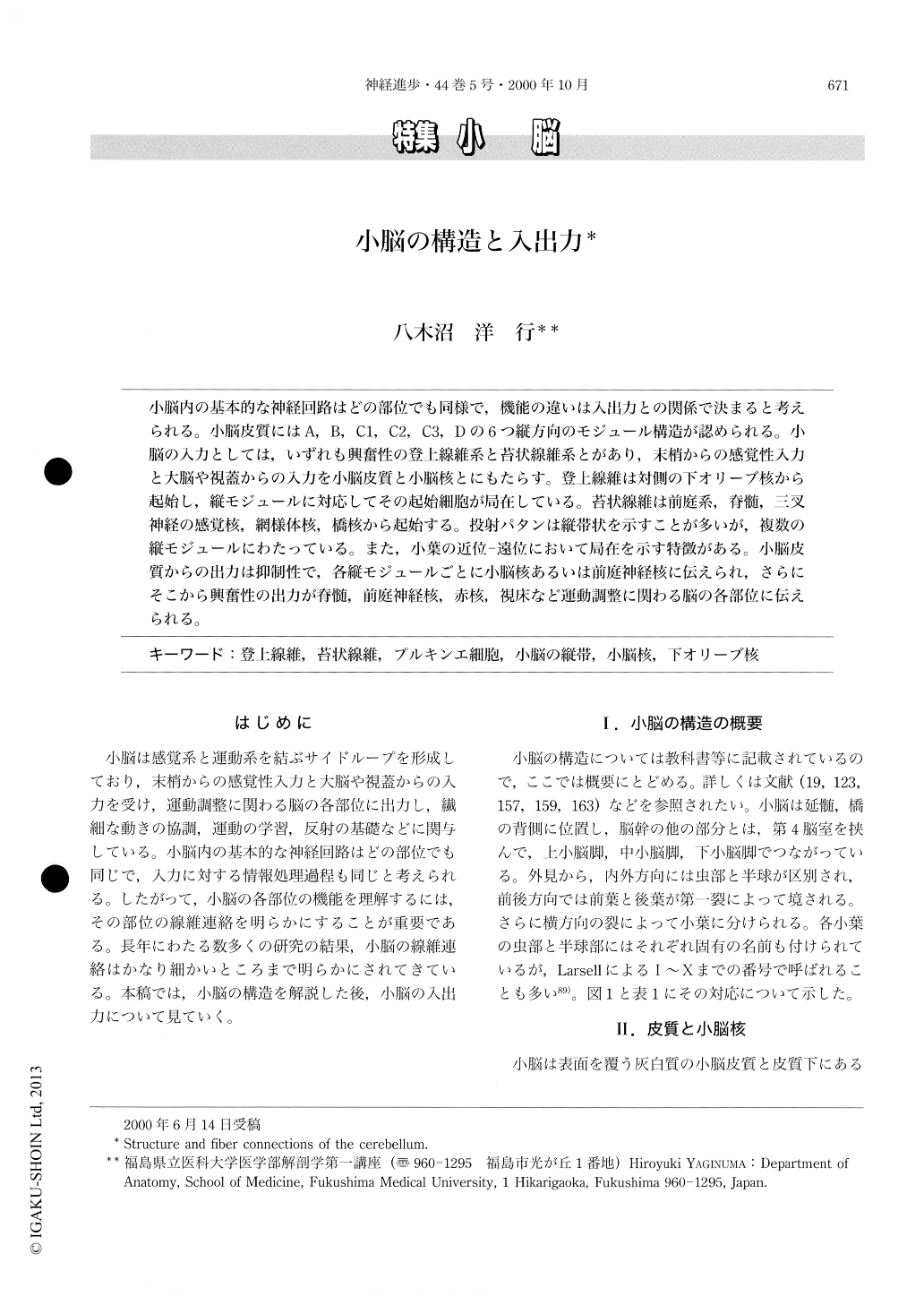Japanese
English
- 有料閲覧
- Abstract 文献概要
- 1ページ目 Look Inside
小脳内の基本的な神経回路はどの部位でも同様で,機能の違いは入出力との関係で決まると考えられる。小脳皮質にはA, B, C1, C2, C3, Dの6つ縦方向のモジュール構造が認められる。小脳の入力としては,いずれも興奮性の登上線維系と苔状線維系とがあり,末梢からの感覚性入力と大脳や視蓋からの入力を小脳皮質と小脳核とにもたらす。登上線維は対側の下オリーブ核から起始し,縦モジュールに対応してその起始細胞が局在している。苔状線維は前庭系,脊髄,三叉神経の感覚核,網様体核,橋核から起始する。投射パタンは縦帯状を示すことが多いが,複数の縦モジュールにわたっている。また,小葉の近位―遠位において局在を示す特徴がある。小脳皮質からの出力は抑制性で,各縦モジュールごとに小脳核あるいは前庭神経核に伝えられ,さらにそこから興奮性の出力が脊髄,前庭神経核,赤核,視床など運動調整に関わる脳の各部位に伝えられる。
The cerebellar cortex can be divided into six major longitudinal zones (A, B, Cl, C2, C3 and D), depending on its structure. Studies on fiber connections of each longitudinal zone revealed that they represent functional modules of the cerebellum. The cerebellum has two kinds of excitatory afferent systems, climbing fibers and mossy fibers. Both of them convey sensory information from the periphery and information from the cerebral cortex and the tectum to the cerebellar cortex and nuclei. Climbing fibers are derived only from the contralateral inferior olivary nucleus with topographic patterns corresponding to the longitudinal zones.

Copyright © 2000, Igaku-Shoin Ltd. All rights reserved.


